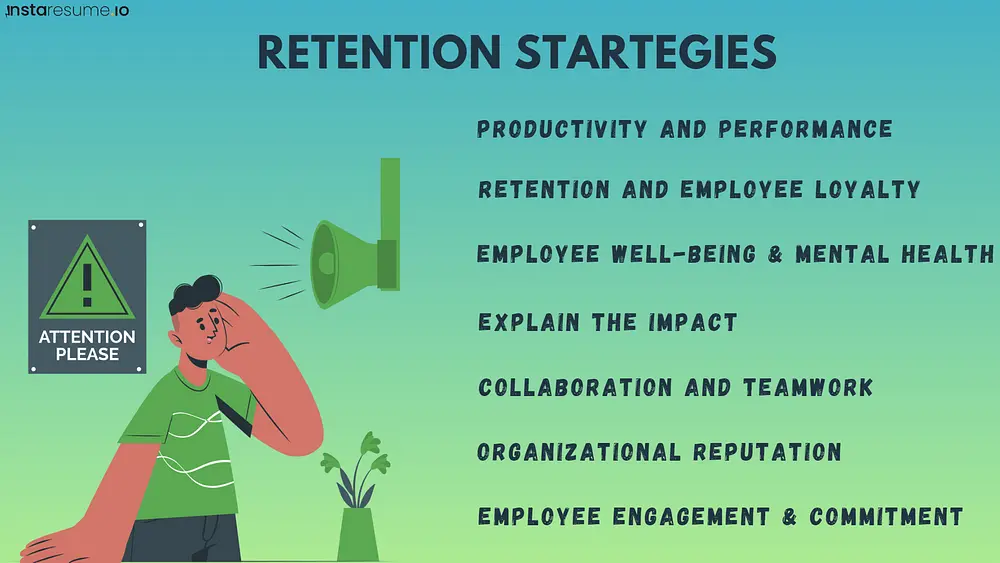13 Reasons why people leave their jobs? 2023
Introduction:
In today's ever-evolving professional landscape, understanding the multifaceted reasons why individuals choose to leave their jobs is essential for organizations striving to enhance employee satisfaction and retention. In this blog, we delve deeper into the unique and lesser-explored aspects that drive people to seek new opportunities. By uncovering these distinctive factors, employers can proactively cultivate an engaging and fulfilling work environment that resonates with their employees' needs and aspirations.

Photo by Izzad Syah on Unsplash
We will explore 13 frequent reasons why people decide to leave their professions in this blog post. Employers and employees may both learn more about how to increase employee engagement, job satisfaction, and retention rates by recognizing these aspects.

Media created on Instaresume.io
Let's understand in more detail why people leave their jobs
1) Lack of career advancement opportunities:
When employees feel like they've reached a career plateau and there are limited opportunities for growth and advancement within their current organization, it can lead to feelings of stagnation and frustration. They may seek out new job prospects that offer better prospects for their professional development and the opportunity to take on more challenging roles.
2) Insufficient compensation and benefits:
Compensation is a critical aspect of job satisfaction. If employees believe they are not being adequately compensated for their skills, experience, and contributions, or if the benefits package provided by the company falls short of their expectations, they may be compelled to explore other employment options that offer more attractive compensation packages.
3) Poor management and leadership:
Effective leadership is vital for creating a positive work environment. When employees experience ineffective or unsupportive management, such as a lack of communication, favouritism, or a failure to provide clear direction and support, it can lead to disengagement and a lack of trust. Employees may be driven to seek opportunities elsewhere where they feel more valued and supported by their superiors.
4) Lack of work-life balance:
Maintaining a healthy work-life balance is increasingly important in today's fast-paced world. Employees who consistently face long working hours, tight deadlines, and a lack of flexibility to attend to personal commitments may feel overwhelmed and burnt out. They may actively pursue job opportunities that prioritize work-life balance, allowing them to integrate their personal and professional lives better.
5) Limited learning and development opportunities:
Continuous learning and growth are highly valued by employees. When organizations fail to provide opportunities for skill development, training programs, or meaningful projects that foster professional growth, employees may feel their careers are stagnating. They may be motivated to seek out employers that prioritize investing in their employees' ongoing development.
6) Poor company culture:
A toxic or unhealthy work culture can have a detrimental effect on employee morale and well-being. Factors such as lack of trust, ineffective communication, discrimination, or a hostile work environment can erode job satisfaction. Employees who feel unsupported or undervalued may actively search for organizations with a positive and inclusive culture that aligns with their values.
7) Lack of recognition and appreciation:
Employees want their contributions to be recognized and appreciated. When their efforts go unnoticed or unacknowledged, it can lead to a sense of demotivation and disengagement. Employees may actively seek out employers who place emphasis on recognizing and appreciating their employees' hard work and achievements.
8) Job dissatisfaction:
Job dissatisfaction can stem from various sources, such as uninteresting or monotonous work, a lack of autonomy, or feeling disconnected from the purpose of their job. Employees who consistently feel dissatisfied with their work may be motivated to explore new opportunities that offer more fulfilling and meaningful roles.
9) Commute or location issues:
Lengthy or challenging commutes can take a toll on employee well-being and work-life balance. Employees facing long travel times or difficulties related to the location of their workplace may consider seeking job opportunities closer to home or in more desirable locations.
10) Changes in personal circumstances:
Life events and personal circumstances, such as starting a family, relocating to another city or country, pursuing further education, or dealing with health issues, can influence an employee's decision to seek new job opportunities that better accommodate their changing needs and priorities.
11) Job insecurity:
Uncertainty about job stability, whether due to organizational changes, layoffs, or economic downturns, can create anxiety and apprehension among employees. Fears of job loss may drive employees to proactively search for more secure employment elsewhere.
12) Conflict with colleagues:
Persistent conflicts or a toxic work environment characterized by strained relationships with colleagues can have a detrimental impact on job satisfaction and overall well-being. If efforts to resolve conflicts are unsuccessful or the work environment remains unsupportive, employees may actively seek out organizations where they can work harmoniously with their peers.
13) Dissatisfaction with company values or direction:
Employees who find themselves misaligned with the values, mission, or overall direction of their organization may question their long-term fit within the company. If they feel their personal values are not reflected in the organization's culture or if they perceive a lack of meaningful purpose in their work, they may be motivated to explore opportunities with organizations that better align with their beliefs and aspirations.
How can we prevent frequent resignations from an organization:

Retention Strategies created on Instaresume.io
Productivity and Performance:
One of the main concerns about including a photo in a resume is the potential for unconscious bias and discrimination. Human beings are susceptible to forming judgments based on appearances, which can lead to unfair evaluations and hinder equal opportunities in the hiring process.
Retention and Employee Loyalty:
In some jurisdictions, employers are legally restricted from making hiring decisions based on physical attributes. Including a photo in your resume may expose companies to legal risks if a candidate believes they were discriminated against due to appearance-related biases.
Employee Well-being and Mental Health:
A resume's primary purpose is to highlight your qualifications, skills, and experiences relevant to the job. Including a photo may divert attention away from these essential elements and shift the focus to your appearance, potentially diminishing the importance of your professional achievements.
Collaboration and Teamwork:
Job satisfaction fosters positive working relationships and effective collaboration among employees. When individuals are satisfied with their jobs, they are more likely to communicate openly, share ideas, and work collaboratively with their colleagues. This leads to better teamwork, increased creativity, and a more positive work environment.
Organizational Reputation:
Job satisfaction impacts an organization's reputation both internally and externally. A satisfied workforce creates a positive organizational culture, which attracts and retains top talent, fosters innovation, and enhances customer satisfaction. A reputation for being a great place to work can also strengthen the organization's brand image and make it more appealing to clients, partners, and stakeholders.
Employee Engagement and Commitment:
Job satisfaction is closely linked to employee engagement and commitment. Satisfied employees are more engaged in their work, actively seek opportunities for growth and development, and exhibit a higher level of commitment to the organization's mission and goals. Engaged employees are more likely to contribute their discretionary effort, which can lead to improved business outcomes and a competitive edge in the market.
Overall, job satisfaction is crucial for creating a positive work environment, driving employee engagement, enhancing productivity and performance, and fostering organizational success. By prioritizing job satisfaction, organizations can create a virtuous cycle where satisfied employees contribute to a positive workplace culture and, in turn, contribute to the organization's growth and success.
Conclusion
By recognizing these factors and taking proactive steps to address them, employers can foster an environment that prioritizes employee satisfaction, engagement, and retention.
Understanding the intricate reasons that drive individuals to seek new job opportunities goes beyond the surface-level factors typically discussed. By recognizing the significance of personal growth, work-life integration, transparency, purpose-driven work, empowerment, recognition, and diversity and inclusion, organizations can adapt their strategies to meet the evolving needs of their employees. Embracing these unique aspects will not only enable businesses to reduce turnover rates but also foster a workplace culture that nurtures and inspires employees, leading to heightened productivity and organizational success.

